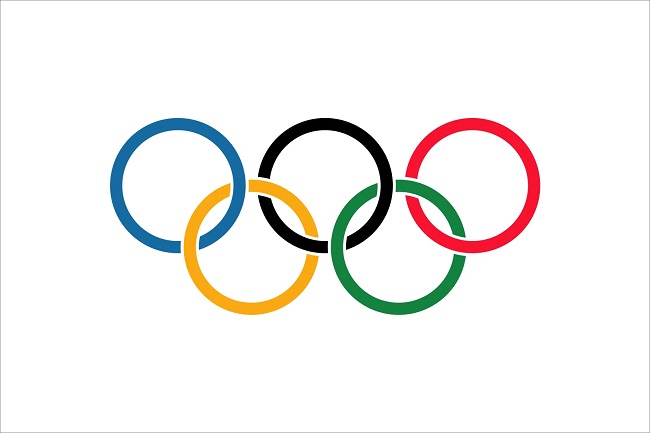The Mole Antonelliana is depicted in stylized form on the logo, with ice crystals in white and blue standing in for snow and the sky, respectively. The Olympic spirit of unity and the web of new technology are also symbolised by the crystal web.
Since Cortina d’Ampezzo hosted the VII Olympic Winter Games in 1956, Italy has twice played host to the Winter Olympics. The XVII Olympiad Games were held in Rome, Italy, in 1960. In June 1999, Turin was chosen as the site for the 2006 Summer Olympics.
City on the 2006 Winter Olympics Emblem

Torino, the Italian name of the city, was used prominently in the design; “Turin” is the name used in English and the local traditional language, Piedmontese.
Neve (which means “snow” in Italian) the snowball and Gliz the ice cube were the official mascots of the games.
The Italian calligrapher Francesca Biasetton coined the motto “Passion lives here” for the XX Olympic Winter Games.
In part because the IOC is headquartered in Switzerland, the decision to choose Turin over Sion came as a shock.
The media speculated that Switzerland was targeted as retaliation for IOC member Marc Hodler’s role as a whistleblower in the 2002 corruption scandal, which led to the exposure of Turin as the host city. Turin’s selection was made two years after Rome’s failed 2004 Summer Olympics bid. Greece’s capital city of Athens won the bid to host the games.
There were 84 Medal Events in 15 Different Sports at the Games.
Mass start biathlon, team sprint cross country skiing, snowboard cross, and team pursuit speed skating were all new to the Olympic programme in Turin.
The men’s and women’s classical 50-kilometer and 30-kilometer distances that were featured at the 2002 Winter Games were not included in these Games since they were rotated out in favour of freestyle competitions. All except one of the cross-country skiing events had longer lengths than those used in Salt Lake City.
Here is a rundown of the sports and events that were part of the games. The number of competitions in each sport type is shown by the figures in parenthesis.
During the opening ceremony on February 10, 2006, Stefania Belmondo, a 10-time Olympic medallist in cross-country skiing, ignited the Olympic Flame. Earlier in the evening, the celebration had highlighted Italy and its sporting achievements, with a special focus on the Alps.
Opening Day of the 2006 Olympics
On the first day of the 2006 Olympics, German Michael Greis won the 20-kilometer biathlon and the first gold medal of the games.
Martins Rubenis’s bronze medal performance in the men’s luge event on February 12th, 2006 was Latvia’s first ever Olympic medal.
The 2006 Winter Olympics featured participants from a record-breaking 80 different National Olympic Committees (NOCs). There were 80 nations represented, two more than at the Olympic Winter Games in 2002.
The figure in parenthesis represents the amount of people provided by NOC. Albania, Ethiopia, and Madagascar were making their debuts. Due to the name change in 2003 and Montenegro’s subsequent independence vote in May, this was Serbia and Montenegro’s last Winter Olympics debut.
Volunteers were recruited from a pool of 40,000 applications to assist athletes, spectators, and media members, as well as to set up and break down venues for the competitions. The recruitment system Noi2006 chose them for inclusion.
For a total of 1.7 billion Euros, 65 sports facilities, diverse infrastructure, sport towns for athletes and journalists, and transportation infrastructure were built.
Disqualified Players
After testing positive for carphedon, Russian biathlete Olga Medvedtseva was disqualified from the 15-kilometer event in which she had previously won silver and multiple other medals.
Armando dos Santos, a Brazilian bobsledder, was disqualified when a pre-competition drug test returned positive (the results were from a test conducted in Brazil).
The quarters of the Austrian athletes were searched by Italian authorities looking for drug evidence. Biathlon instructor Walter Mayer, who had a lifetime Olympic doping ban up through and including the 2010 Vancouver Games, was the prime suspect in the investigation that led to the raid.
Mayer and two other Austrian biathletes, Wolfgang Perner and Wolfgang Rottmann, attempted to escape and return to Austria around the time of the raid. The president of the Austrian ski federation later claimed that the two skiers had admitted to him that they “may have utilised unlawful tactics.”
Although ticket sales were satisfactory, low attendance was recorded at a number of events.
Final Words
Anja Pärson earned her first gold medal in the women’s slalom on the twelfth day of competition, February 22nd, 2006. This was her fifth Olympic medal in total and her third at the 2006 Games.
In a biathlon chase over 10 kilometres, Germans Kati Wilhelm and Martina Beck placed first and second, respectively. Counting all medals, Germany took home 29.